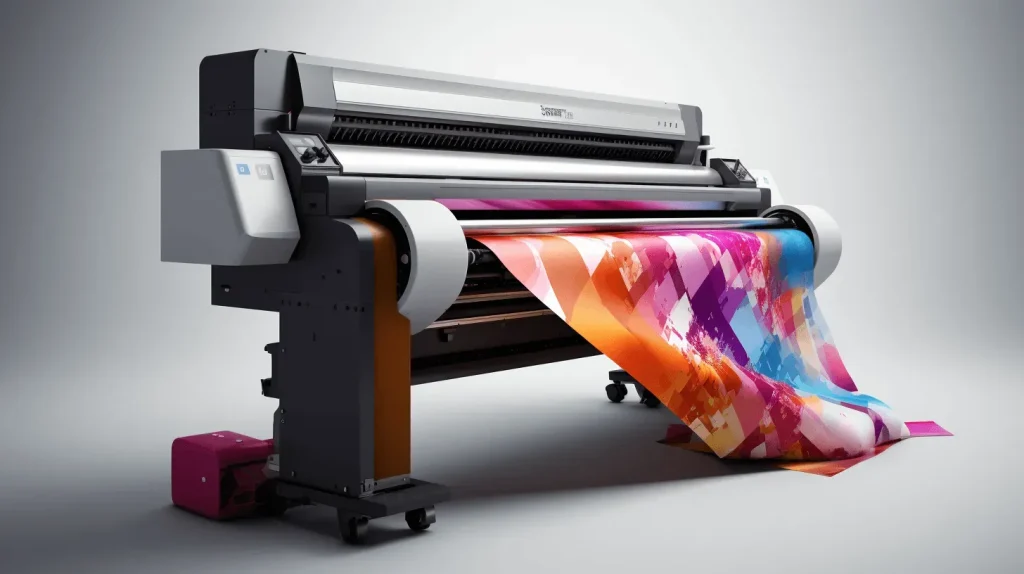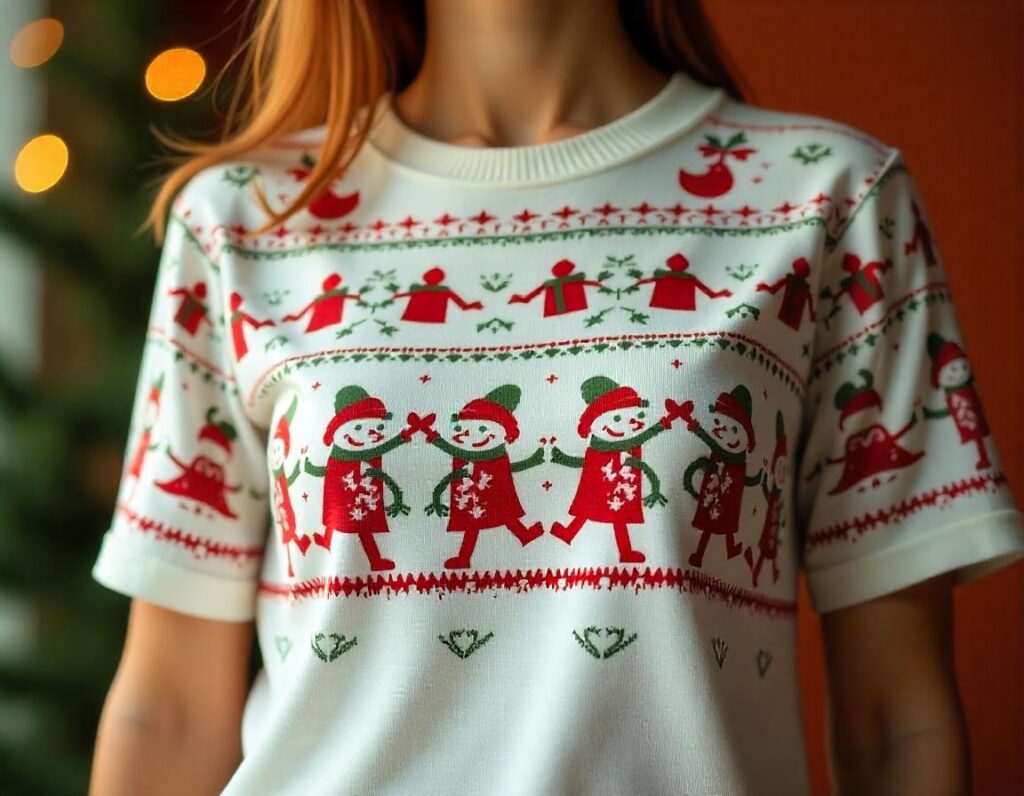DTF printing, or Direct-to-Film printing, is revolutionizing the way designs are applied to fabric in the fashion industry. This innovative digital transfer printing technique allows for bright colors and intricate designs to be printed directly onto a special film, which is then transferred onto various textiles using heat and pressure. As brands increasingly prioritize sustainable printing technology, DTF emerges as an eco-friendly alternative to traditional methods, drastically reducing water usage and chemical waste in the process. With the rising demand for custom clothing and personalized garments, DTF printing offers flexibility and efficiency, enabling designers to meet consumer needs effectively. As we delve deeper into this topic, it becomes clear that DTF printing is not just a trend but a foundational stone for the future of textile printing.
Known alternatively as Direct-to-Film technology, DTF printing represents a significant advancement in textile customization and production. This method is gaining traction among clothing manufacturers who seek to innovate within the dynamic landscape of the fashion sector. By harnessing digital transfer techniques, brands can efficiently produce bespoke items that resonate with modern consumers’ desires for individuality and sustainability. This shift towards personalized fashion solutions signifies an important evolution within the printing sector, aligning with increasing interest in eco-conscious practices. As we explore the benefits of this contemporary printing approach, it’s evident that DTF is reshaping the way fashion is created and consumed.
The Transformation of Textile Printing with DTF Technology
DTF printing, or Direct-to-Film printing, has emerged as a revolutionary technique within the textile printing landscape. This method not only streamlines the creation of intricate designs but also opens up new avenues for customization that were previously unattainable with traditional methods. By utilizing a specialized film and heat transfer, designers can achieve stunning graphics on a wide range of fabrics, thus significantly enhancing the vibrancy and detail of printed apparel. As such, DTF technology is becoming a staple in the industry, enabling fashion brands to cater to the growing consumer demand for bespoke and unique clothing options.
Moreover, this transformation is not merely aesthetic; it also reflects a fundamental shift in how apparel is produced and marketed. DTF printing allows for on-demand production, which is critical in an era where fast fashion can be both an asset and a liability. By reducing waste and enabling smaller production runs, brands can respond swiftly to emerging trends while maintaining environmental sustainability, a necessity in today’s market. Thus, the adoption of DTF technology represents a convergence of creativity with responsible production practices.
Cost-Effectiveness and Accessibility of DTF Printing
One of the most compelling advantages of DTF printing lies in its cost-effectiveness, particularly for small businesses and independent designers. Unlike traditional screen printing, which often requires substantial upfront investments in screens, inks, and equipment, DTF technology allows for lower initial costs and minimized resources. This aspect democratizes fashion production, enabling even startups to create high-quality, custom garments without incurring excessive costs. By allowing for small batch orders, DTF facilitates a more agile approach to fashion production that resonates well with today’s market trends.
Additionally, the accessibility of DTF printing technology is reshaping the landscape of custom clothing. With lower barriers to entry, a wider range of designers can experiment with unique designs and expressions. This flexibility is crucial in an industry that values innovation and originality. As DTF becomes more prevalent, it supports a culture where creatives can thrive without the constraints of previous, more limited textile printing methods. Ultimately, this transition promotes a vibrant mix of fashion choices that appeal to a broad audience.
Sustainability and DTF: A Step Towards Eco-Friendly Fashion
In today’s fast-paced fashion industry, sustainability is no longer optional; it’s a requirement. DTF printing is making significant strides towards eco-friendly practices in the textile printing domain. Traditional screen printing often involves hazardous chemicals and consumes vast amounts of water, leading to environmental degradation. Conversely, DTF serves as an environmentally responsible alternative, utilizing minimal water and avoiding toxic inks. By adopting DTF technology, fashion brands can significantly reduce their environmental footprint while still producing top-quality garments.
Moreover, as consumer consciousness shifts towards sustainability, brands that prioritize eco-friendly practices often find themselves with a competitive edge. Incorporating DTF printing within one’s production line not only aligns with ethical business practices but also fulfills consumer demands for greener alternatives. Companies leveraging this technology can effectively market themselves as sustainable, helping to attract eco-conscious consumers looking to make informed purchasing decisions. Thus, DTF printing represents not just a technological advancement, but a pathway to responsible fashion.
Emerging Market Trends in Customized Clothing
The trend towards customization in the fashion industry is a game-changer, and DTF printing is at the heart of this movement. With consumers increasingly seeking personalized clothing items that reflect their individuality, DTF technology provides the ideal solution for brands looking to meet this rising demand. This customization trend is indicative of a larger shift in consumer behavior, where buyers prefer unique, one-of-a-kind pieces over mass-produced clothing, and DTF caters expertly to this desire.
In response to this trend, brands are integrating DTF printing into their offerings to create custom designs quickly and efficiently. Whether it’s a personalized graphic tee or custom accessories, DTF printing enables rapid turnaround times and ensures that unique designs can be delivered with precision. This adaptability not only enhances customer satisfaction but also fosters brand loyalty as consumers return for custom pieces that resonate with their style. The ability to offer such tailored products positions brands favorably in an oversaturated market.
E-Commerce and the Integration of DTF Printing
As e-commerce continues to dominate the retail landscape, the integration of DTF printing technology becomes pivotal for fashion brands looking to optimize their online offerings. Online shopping provides an ideal platform for customized products, and DTF’s ability to produce unique designs on demand perfectly aligns with this shift. Retailers can leverage DTF to efficiently meet customer demands for bespoke items, translating to an enhanced shopping experience.
Furthermore, the seamless integration of DTF printing into e-commerce platforms enables a robust business model that caters to personalization without the lengthy wait times typical of traditional production methods. Consumers are increasingly looking for immediate gratification when shopping online, and DTF allows brands to deliver personalized products swiftly. By adopting this technology, companies can increase their competitive edge in the global market, ensuring they can swiftly adapt to changing consumer preferences while maintaining high-quality standards.
Future Advancements in DTF Printing Technology
The landscape of DTF printing technology is continuously evolving, driven by innovation and advancements in printing machinery. Recent developments have enhanced printing speeds, allowing businesses to handle larger volumes without sacrificing the quality that consumers expect. As the demand for high-quality fabric prints continues to grow in the fashion industry, advancements in DTF technology will only propel its popularity further.
Additionally, the future of DTF printing looks promising as manufacturers invest in research and development to create machines that deliver even finer details and colors. These enhancements not only improve the efficiency of production processes but also pave the way for more intricate designs that appeal to the fashion-forward consumer. As technology progresses, we can expect DTF printing to evolve further, introducing novel possibilities for creativity and design in the fashion industry, making it a critical component of modern textile printing.
Frequently Asked Questions
What is DTF printing in the fashion industry?
DTF printing, or Direct-to-Film printing, is a method that involves printing designs onto a specialized film and transferring them onto fabric using heat and pressure. This technique is gaining popularity in the fashion industry due to its ability to produce high-quality, detailed designs quickly, making it a more efficient alternative to traditional textile printing methods.
How does DTF printing contribute to sustainable printing technology?
DTF printing contributes to sustainable printing technology by significantly reducing water usage and avoiding harmful chemicals often associated with traditional screen printing. This environmentally friendly approach allows fashion brands to produce garments with a lower carbon footprint, aligning with the growing consumer demand for sustainable practices in the fashion industry.
Why is DTF printing considered cost-effective for custom clothing production?
DTF printing is considered cost-effective because it allows brands to print smaller runs without the need for large inventory. This means that even independent designers can produce custom clothing economically. The quick turnaround times and flexibility of DTF technology help brands adapt to rapid market changes while minimizing wasted resources.
What are the quality advantages of DTF printing over traditional textile printing methods?
One of the main quality advantages of DTF printing is its ability to produce vibrant colors and intricate details that many traditional textile printing methods cannot match. DTF printing adheres well to various fabric types such as cotton and polyester, which increases versatility and enables designers to bring complex designs to life in their fashion collections.
How does DTF printing respond to emerging trends in the fashion industry?
DTF printing is responding to emerging trends in the fashion industry by enabling brands to offer personalized and custom clothing options. As consumer demand for unique, one-of-a-kind items rises, DTF technology is becoming integral in meeting these demands, allowing for greater creativity and customization in fashion production.
What role does DTF printing play in e-commerce for fashion brands?
DTF printing plays a crucial role in e-commerce for fashion brands by facilitating the efficient production of personalized items with minimal lead times. As more consumers shop online, integrating DTF printing into e-commerce platforms allows brands to meet the growing demand for tailored offerings, enhancing customer satisfaction and increasing sales opportunities.
| Key Point | Description |
|---|---|
| What is DTF Printing? | A process involving printing designs on film and transferring them to fabric using heat and pressure, providing detail and flexibility. |
| Cost-Effectiveness of DTF | Reduces need for large print batches, allowing small businesses to economically produce custom designs. |
| Exceptional Quality and Versatility | Offers vibrant colors, intricate details, and can be used on various fabrics, enabling creative fashion collections. |
| Positive Environmental Impact | Minimizes water usage and avoids harmful chemicals, making it a sustainable choice for fashion brands. |
| Emerging Market Trends | Rising demand for personalized clothing increases DTF’s relevance as brands cater to unique consumer preferences. |
| Integration with E-Commerce | Enables online retailers to offer personalized items quickly, matching consumer demand for unique products. |
| Advancements in Printing Technology | New technologies improve print quality and speed, making DTF adoption easier and enhancing production capabilities. |
Summary
DTF printing has emerged as a transformative force in the fashion industry, reshaping how brands create and deliver products. This innovative method allows for environmentally friendly practices, exceptional detail, and cost-effective production, all while meeting the growing consumer demand for customization. As fashion moves towards a more personalized experience, DTF printing stands at the forefront, providing solutions that cater to the evolving landscape of consumer preferences. With the integration of DTF technology into e-commerce, brands are equipped to offer unique items rapidly, thus satisfying the modern shopper’s desire for individuality. As we look to the future of fashion printing, DTF will undoubtedly play a crucial role in shaping sustainable and creative solutions.



